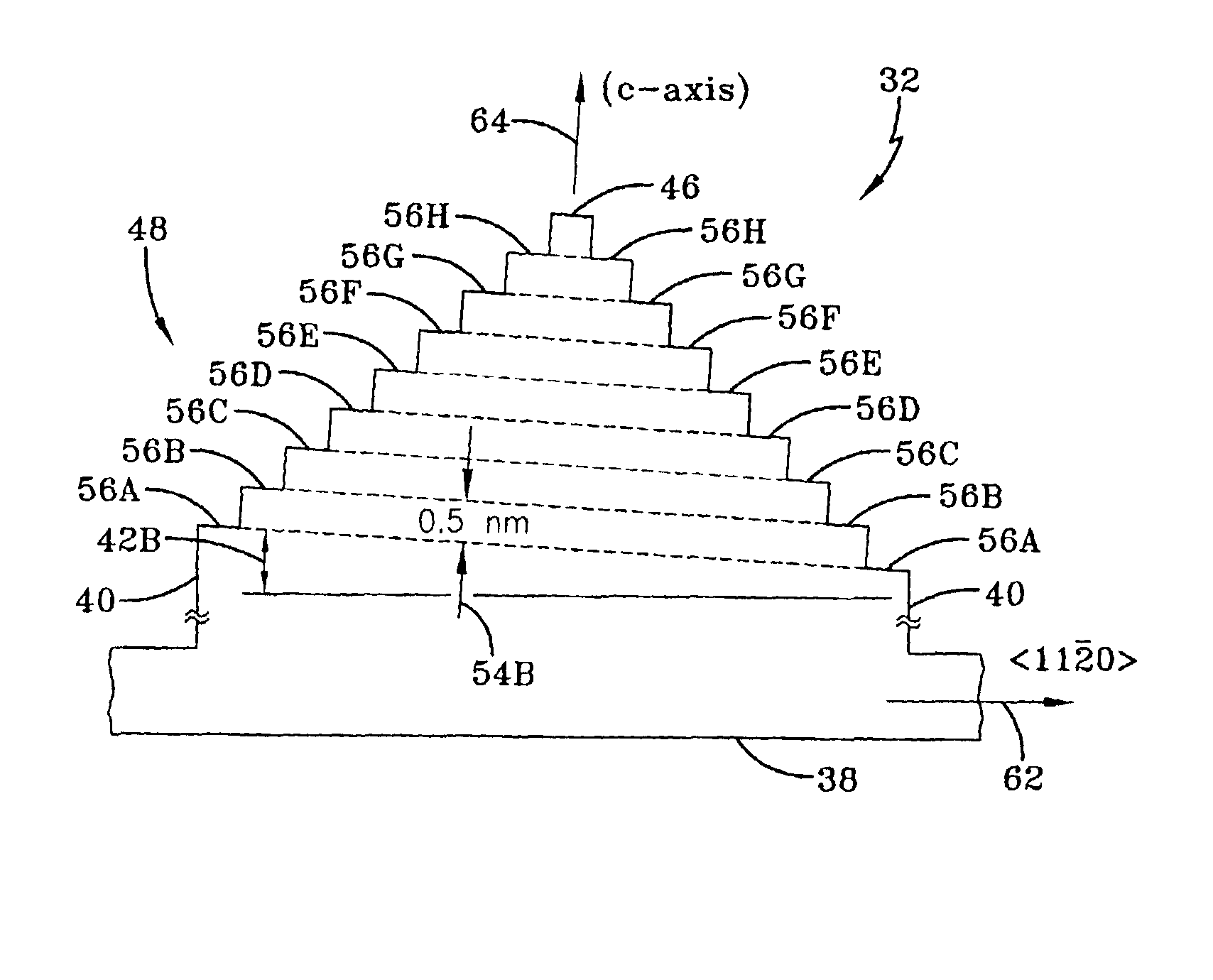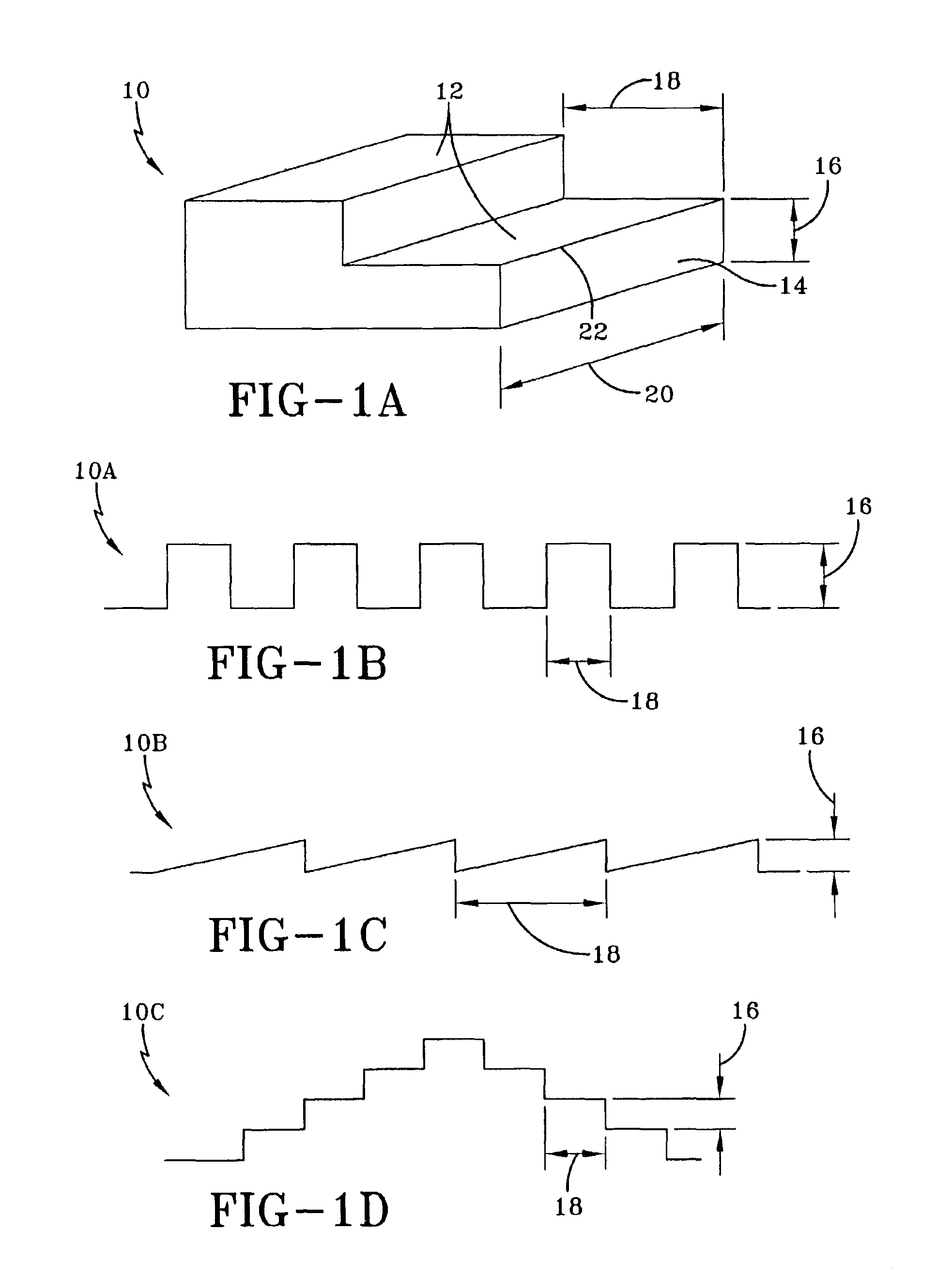Method for the production of nanometer scale step height reference specimens
a technology of height reference specimens and nanometer scales, which is applied in the direction of polycrystalline material growth, after-treatment details, instruments, etc., can solve the problems of less desirable commercial step-height reference standards, height calibration artifacts not previously available, and not previously commercially availabl
- Summary
- Abstract
- Description
- Claims
- Application Information
AI Technical Summary
Benefits of technology
Problems solved by technology
Method used
Image
Examples
Embodiment Construction
step-height from plateau to plateau.
[0038]FIG. 10 is comprised of FIGS. 10A and 10B that illustrate collectively a further embodiment of the present invention, wherein the step-flow etch is carried out on a 3C-SiC single crystal heteroepitaxial film that has been grown on an atomically flat 4H-SiC mesa. The step-flow etch produces a pyramidal pattern of concentric plateaus that have a step-height of single bilayer (approximately 0.25 nm) between each plateau. The shape of the plateaus approximate the shape of the mesa. FIG. 10A is a top view of the plateaus, and FIG. 10B is a cross-sectional view showing the single-bilayer steps and the tilt of the plateaus with respect to the bottom of the wafer. For purposes of illustration, it is assumed that the initial top surface of the wafer is parallel to the bottom surface of the wafer.
DETAILED DESCRIPTION OF THE PREFERRED EMBODIMENTS
[0039]The present invention is related to a product by process, wherein the product is primarily a step-heig...
PUM
 Login to View More
Login to View More Abstract
Description
Claims
Application Information
 Login to View More
Login to View More - R&D
- Intellectual Property
- Life Sciences
- Materials
- Tech Scout
- Unparalleled Data Quality
- Higher Quality Content
- 60% Fewer Hallucinations
Browse by: Latest US Patents, China's latest patents, Technical Efficacy Thesaurus, Application Domain, Technology Topic, Popular Technical Reports.
© 2025 PatSnap. All rights reserved.Legal|Privacy policy|Modern Slavery Act Transparency Statement|Sitemap|About US| Contact US: help@patsnap.com



